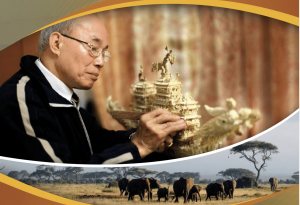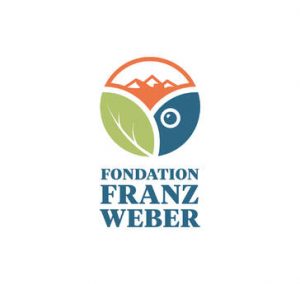By Michael Eustace. Originally published on Business Day Live.
There are at least 400,000 elephants in Africa and about 8,000 of them die of natural causes each year. In 2015 about 20,000 elephant were poached which, together with natural deaths, would have produced 196 tons of ivory at 7 kg per elephant. If half the ivory from natural deaths found its way into official stocks that would have amounted to 28 tons leaving 168 tons to be exported, illegally, to the Far East, mainly China.
In a recent study by elephant expert Daniel Stiles, most of the ivory was found to go to speculators with only a small fraction of, say, 20 tons going to the carving trade. The balance of 148 tons would have had a wholesale value of $148 million which is small in investment-market terms: it would only need 148,000 or 0.01% of the Chinese population investing $1,000 each.
The current remedies for reducing poaching are law enforcement and demand reduction. Law enforcement, while essential, is difficult and expensive and has not proven to be successful over a period of many years. Corruption undermines much of the effort.
Burning and crushing ivory stockpiles is sometimes seen to be an important part of demand reduction but it has the negative effect of reducing potential supplies, increasing the price of ivory and increasing the incentive to poach. Burning is theatre set up to advertise the plight of elephants and to persuade “right-thinking” people that buying ivory means the poaching of elephants and poaching is bad because elephant populations are in decline. The weakness here is that speculators are in the business of buying ivory in order to make money from price increases and “right-thinking” might not be a constraint. For demand reduction to work you need to convince almost every speculator and potential speculator in China that holding ivory is wrong.
A recent study has suggested that the CITES (Convention on International Trade in Endangered Species) ivory auction in 2008 sent a message to the market that ivory trade was legal (suddenly) and as a consequence there was less “stigma” attached to buying ivory and demand therefore increased, stimulating poaching. 107 tons were auctioned to the only 2 buyers that CITES allowed which were China and Japan. They colluded and bought the ivory for less than 20% of the market price. Parks in Southern Africa were the losers. The auctioned ivory is being rationed over a period of about 10 years so is insignificant in the overall supply and demand numbers. Markets are savvy and the ivory market will have seen it for what it was…a small amount of legal ivory in a market that is mostly illegal. Rhino poaching in South Africa increased from 13 in 2007 to 1,175 in 2015, without any impetus from legal sales of rhino horn.
Something else appears to be happening and that may be, simply, that Africans looking for income are poaching more.
The solution lies not in prohibition but in supplying the market with legal ivory in a controlled way. 56 tons p.a. can come from natural deaths and 60 tons p.a. from official stocks of 600 tons held in various countries in Africa. In addition, there are likely to be exceptional deaths in Botswana and Zimbabwe because of a loss of habitat, which may add a further 28 tons for a total of 144 tons. Some poaching will continue, say, 4,000 (2015=20,000) elephant producing 28 tons. That totals 172 tons as compared with an estimated 168 tons in 2015.
A regular supply of legal ivory, no burning and an increasing number of elephants should dampen the demand from speculators. Illegal prices should decline and motivate destocking of illegal ivory. Illegal ivory will trade at a discount (30 %?) to legal ivory because of the risk of prosecution and that will help to depress speculative demand for illegal ivory even further. The poaching trade will find it difficult to find a buyer for their illegal ivory.
A legal trade system does need to be astutely constructed with, probably, a central selling organisation (CSO) selling to a cartel of licensed retailers in China. That structure will establish a clear channel for legal ivory. The Chinese government will receive taxes from the retailers’ profits and as a result be incentivised to close down the illegal trade. If necessary, the CSO, as a near monopoly, can increase prices to limit demand to sustainable levels of supply.
Legal ivory sales could generate $144 million p.a. for parks in Africa. That is sufficient to turn 144 parks from their current trend of steady decline, into thriving parks. Thriving parks will increase tourism. A 10% (5 million) increase in Africa’s tourists staying for 10 days at $200 per day will add earnings of $10 billion p.a. From that amount parks could make a profit of $1 billion p.a. Suddenly parks, with elephants as the catalyst, become profitable and profitability is essential for the survival of Africa’s parks. Conservation buys no votes in Africa.
In my opinion, a well organised legal ivory trade would be a more effective way of caring for Africa’s elephants and their homes, Africa’s parks.
Michael Eustace.
(Eustace is an investment analyst.)



